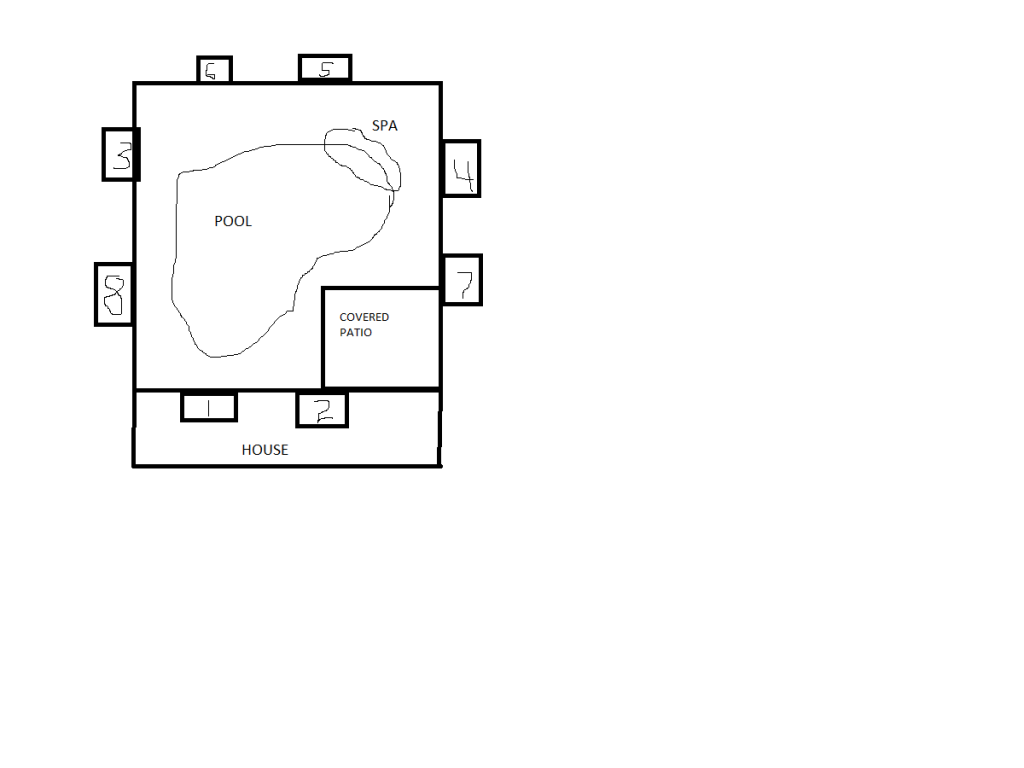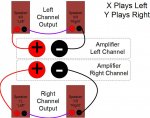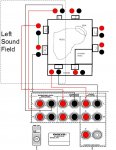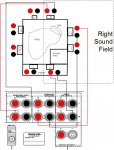- Apr 11, 2012
- 41
DECK is 36 x 36. I forgot to include that on the drawing. Picasso I am not 

I need to get prepped to put down the conduit for the pool speakers. Our house faces south and the pool is in the backyard. I initially planned on putting two speakers under the eaves (1,2) and two rocks on the north side of the deck (5,6). I’m now considering adding two rock speakers on the east side (4,7) and two rock speakers on the west side (3,8). I have never wired speakers in series or parallel. I understand parallel 1/2s the impedance and series doubles it. I’m pretty certain I can figure out the wiring to wire a set in parallel, the other set in parallel, and then in series to join the two sets. This should result in 8 ohms impedance. Odd speakers to left channel and even speakers to right channel. Is that correct?
1. I called outdoorspeakerdepot today to ask about this setup and the salesperson sounded clueless. HE backed it up by telling you can only connect one set of speakers to a volume control. Odd how they sell VCs that can control 8 speakers. Would it be better to wire left and right channels to one volume control or two separate controls?
2. I want the volume control(s) on the covered patio. I’m thinking two controls, one per channel. Any chance I can get away with just one?
3. I’m going to drive the system with an Onkyo 7.1 receiver, HT-R530. I will never need to really turn this up. A county sheriff lives behind me. I really do not need him coming over to tell me to turn it down. The receiver is rated at 110 watts per channel. Is this enough to power 4 speakers per channel?
4. Anything else I should consider?
Thanks!

I need to get prepped to put down the conduit for the pool speakers. Our house faces south and the pool is in the backyard. I initially planned on putting two speakers under the eaves (1,2) and two rocks on the north side of the deck (5,6). I’m now considering adding two rock speakers on the east side (4,7) and two rock speakers on the west side (3,8). I have never wired speakers in series or parallel. I understand parallel 1/2s the impedance and series doubles it. I’m pretty certain I can figure out the wiring to wire a set in parallel, the other set in parallel, and then in series to join the two sets. This should result in 8 ohms impedance. Odd speakers to left channel and even speakers to right channel. Is that correct?
1. I called outdoorspeakerdepot today to ask about this setup and the salesperson sounded clueless. HE backed it up by telling you can only connect one set of speakers to a volume control. Odd how they sell VCs that can control 8 speakers. Would it be better to wire left and right channels to one volume control or two separate controls?
2. I want the volume control(s) on the covered patio. I’m thinking two controls, one per channel. Any chance I can get away with just one?
3. I’m going to drive the system with an Onkyo 7.1 receiver, HT-R530. I will never need to really turn this up. A county sheriff lives behind me. I really do not need him coming over to tell me to turn it down. The receiver is rated at 110 watts per channel. Is this enough to power 4 speakers per channel?
4. Anything else I should consider?
Thanks!





